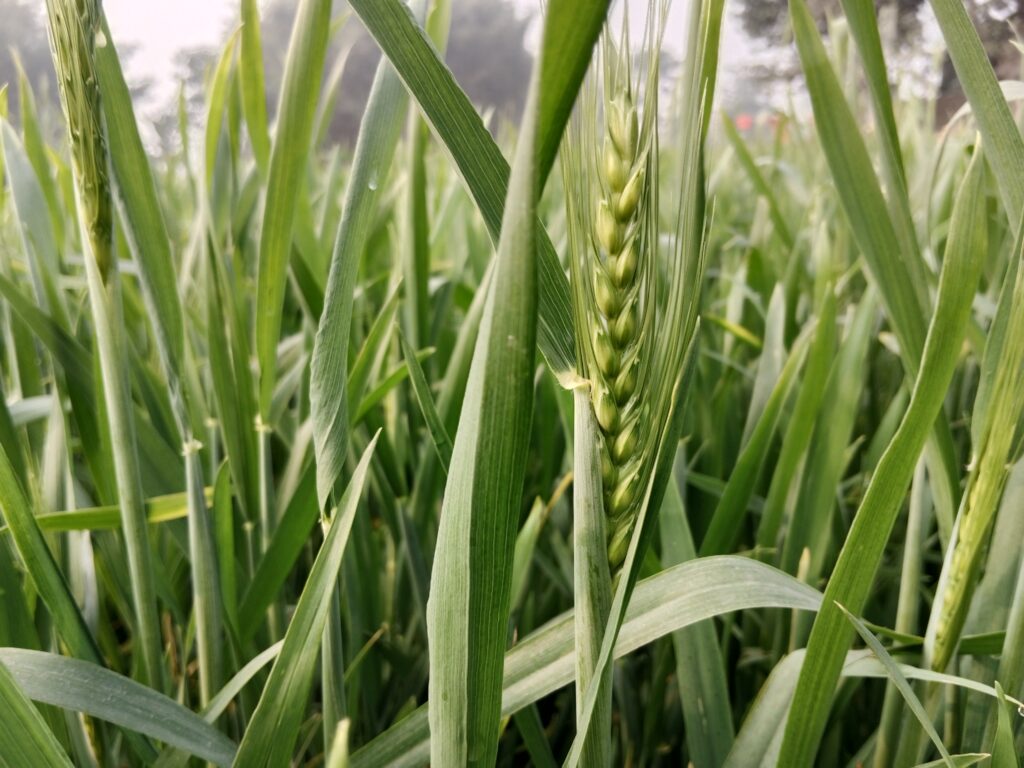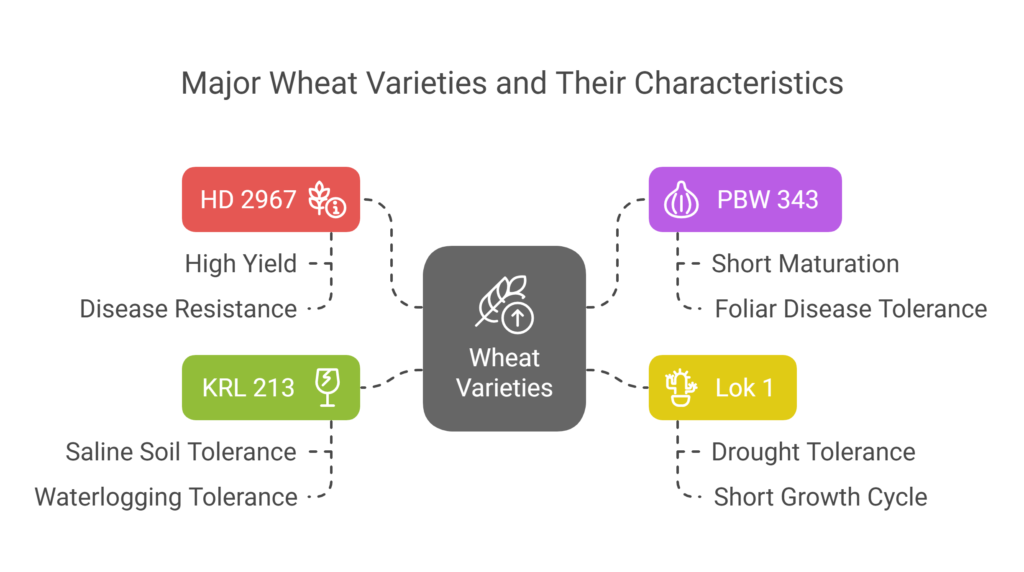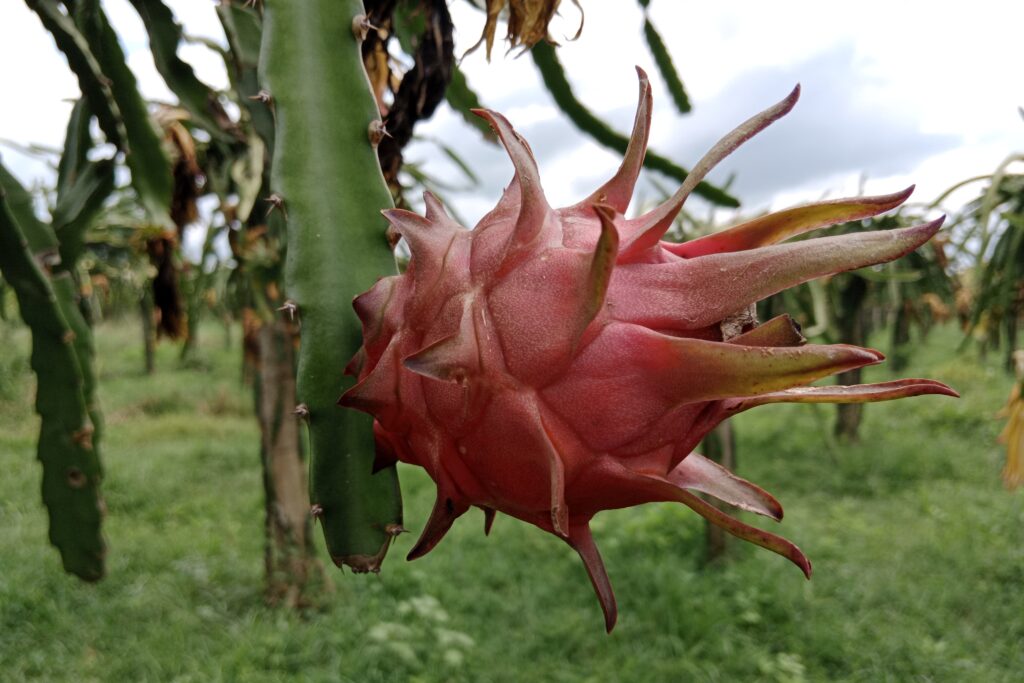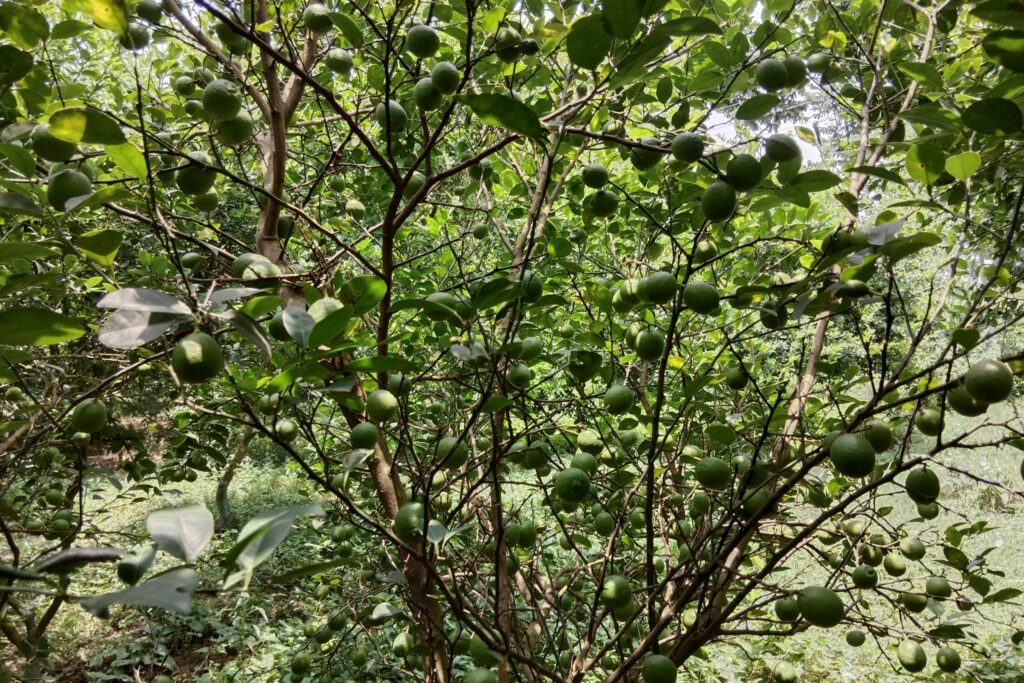Wheat Farming
Wheat farming profit per acre analysis reveals the total cost of NRs. 45,500, while income from selling 2,400 kg of wheat at NRs. 38/kg generates NRs. 91,200, yielding a net profit of NRs. 45,700 (91,200 − 45,500). This equates to a ~100% profit margin, doubling the initial investment. Land preparation (33% of costs) and fertilizers/manure (15%) are major expenses, whereas a high yield (2,400 kg/acre) and favorable market price (NRs. 38/kg) drive profitability. Wheat farming profit per acre highlights its viability as a lucrative venture, contingent on maintaining optimal yield, cost efficiency, and stable market conditions.

Land Preparation
Proper land preparation is critical for achieving optimal wheat yields, requiring plowing 2-3 times to break up soil, ensure a fine tilth, and improve aeration and root penetration. This process, typically done post-monsoon (October–November) for winter wheat, includes harrowing and leveling to minimize waterlogging, enable uniform irrigation, and incorporate or remove crop residues to enrich organic content. Key steps—plowing, harrowing, and leveling (using tractors or traditional tools)—aim to enhance moisture retention, eliminate weeds, and create ideal soil conditions, directly impacting crop health and productivity. Timing varies for spring wheat, emphasizing adaptability to seasonal requirements.
Soil Type
Loamy or clay-loam soils that drain well, have a pH of 6.0 to 7.5, are rich in organic matter, and have the ability to retain moisture are ideal for wheat’s robust growth. Soils that are waterlogged or saline-alkaline should be avoided since they hinder root growth and lower yields. Pre-planting soil tests are advised to determine nutrient levels and guarantee ideal conditions, giving preference to soils with adequate drainage to avoid stagnation and encourage strong plant growth.
Climatic Requirements
Wheat, a temperate crop, thrives in cool temperatures (10–25°C) during its growth phase and requires warm, dry conditions for grain maturation, with optimal temperatures ranging between 15–25°C. While winter wheat can tolerate frost, it becomes sensitive during flowering. Ideal annual rainfall is 500–800 mm, though irrigated cultivation is feasible in drier regions if water is supplied during critical stages like germination and grain filling. Winter varieties depend on vernalization—a cold period (≤5°C for 30–60 days)—to trigger flowering, highlighting the importance of region-specific climate adaptation for maximizing yield and ensuring successful growth cycles.
Major varieties

a). HD 2967
HD 2967 is a high-yielding, disease-resistant wheat variety widely cultivated in irrigated regions, renowned for its resilience against rust and fungal pathogens. With a maturity period of 140–150 days, it produces bold, high-quality grains, making it a preferred choice in North India’s wheat belt. Its adaptability to intensive farming practices and consistent performance under optimal irrigation and nutrient management solidify its popularity among farmers aiming for robust yields and reduced crop loss risks.
b). PBW 343
PBW 343 is a high-performing wheat variety optimized for timely sowing in fertile soils, particularly across the Indo-Gangetic plains. Known for its short maturation period of approximately 125 days, this variety reduces field occupancy time while maintaining robust yields. It exhibits tolerance to foliar diseases such as leaf rust and powdery mildew, enhancing crop reliability under optimal agronomic practices. PBW 343’s adaptability to intensive farming systems and consistent grain quality make it a staple choice for farmers prioritizing efficiency, disease management, and stable productivity in favorable agro-climatic conditions.
c). Lok 1
Lok 1 is a drought-tolerant wheat variety specifically bred for semi-arid regions, excelling in rainfed conditions with minimal irrigation. Its short growth cycle of 110–120 days reduces water dependency, making it a practical choice for areas prone to erratic rainfall, such as Gujarat and Rajasthan. Adapted to harsh climates, Lok 1 maintains stable yields even under moisture stress, while its hardy nature and efficient resource use have cemented its popularity among farmers seeking resilient, low-input crop options in water-scarce environments.
d). KRL 213
KRL 213 is a resilient wheat variety engineered for stress-prone environments, excelling in saline soils and waterlogged conditions due to its robust root system that enhances nutrient absorption and stress tolerance. Its resistance to yellow rust minimizes disease risks, while adaptability to marginal soils makes it a strategic choice for regions like Haryana and Punjab. By addressing both abiotic (salinity, waterlogging) and biotic (disease) challenges, KRL 213 ensures stable yields and reduces crop losses, offering farmers a reliable solution for cultivating otherwise less productive lands.
Seed Selection
Select high-quality, certified seeds that are free from pests and diseases. Seeds should have a high germination rate (above 85%) and be sourced from reliable suppliers. Treating seeds with fungicides like Carbendazim or bioagents such as Trichoderma helps prevent seed-borne diseases.
Seed Rate per Acre
The optimal seed rate for wheat varies based on the variety and sowing method, with broadcast sowing requiring 40–50 kg of seeds per acre and line sowing needing 30–40 kg per acre. Line sowing, being more precise, reduces seed waste and ensures uniform plant distribution, minimizing competition for nutrients, light, and water. Adhering to these guidelines promotes balanced crop density, enhances plant health, and optimizes yield potential by preventing overcrowding or underutilization of the field. Farmers must align seed rates with local agronomic practices and variety-specific recommendations for efficient resource use and maximum productivity.
Planting
Wheat is typically sown between mid-November and mid-December, adjusted to regional climatic conditions, with seeds planted at a depth of 2–5 cm to ensure proper soil-seed contact and germination. Line sowing, maintaining 20–22 cm row spacing, optimizes nutrient absorption, simplifies weed management, and promotes uniform growth.
This method enhances light penetration, reduces inter-plant competition, and supports mechanized farming operations. Timely sowing aligned with local weather patterns, combined with precise depth and spacing, ensures robust crop establishment, maximizes yield potential, and mitigates risks associated with delayed planting or erratic environmental conditions.
Irrigation Management in Wheat Cultivation
Wheat requires precise irrigation at four critical growth stages to maximize yield and avoid stress.

a). Crown Root Initiation (20–25 days after sowing)
The first irrigation at this critical stage (20–25 days post-sowing) is essential to stimulate robust root development, ensuring seedlings establish a strong foundation for nutrient and water absorption. Adequate moisture during crown root formation enhances early plant vigor, mitigates drought stress, and supports uniform seedling growth. Proper irrigation at this phase directly influences subsequent tillering and overall crop resilience, laying the groundwork for optimal yield potential. Neglecting water supply during this period risks stunted roots, uneven stands, and long-term productivity losses.
b). Tillering (40–45 days)
The second irrigation, timed 40–45 days after sowing, is critical to support tiller development—the emergence of side shoots that form grain-bearing spikes. Adequate water availability during this phase ensures vigorous tiller growth, directly influencing the number of productive spikes and, consequently, yield potential. Water scarcity at this stage restricts tiller formation, leading to fewer spikes and reduced grain output. Optimal irrigation during tillering stabilizes plant metabolism, enhances nutrient uptake, and maximizes the crop’s structural framework, ensuring a strong foundation for subsequent growth stages and higher harvest efficiency.
c). Flowering (60–70 days)
The third irrigation, timed 60–70 days after sowing, is critical during the pollination phase to prevent flower abortion and ensure successful grain formation. Adequate moisture at this stage supports pollen viability, fertilization, and kernel development, while drought stress disrupts these processes, leading to sterility, incomplete grain filling, and irregularly shaped grains. Proper irrigation stabilizes metabolic activity, minimizes heat stress, and ensures uniform grain maturation, directly influencing both yield quantity and quality. Neglecting water supply during flowering risks irreversible yield losses, underscoring its pivotal role in transforming floral structures into productive harvestable grains.
d). Grain Filling (90–95 days):
The final irrigation at 90–95 days post-sowing is pivotal for maximizing grain size and weight by sustaining starch and protein synthesis during the grain-filling phase. Adequate moisture ensures optimal translocation of nutrients to the developing kernels, enhancing plumpness and uniformity. Water stress at this stage disrupts carbohydrate accumulation, leading to shriveled grains, reduced test weight, and yield losses of up to 20–30%. During this period, timely irrigation safeguards grain quality, ensures marketable yields, and secures the crop’s economic value, making it indispensable for translating earlier growth efforts into harvestable productivity.
Fertilizer and Manure
a). Organic Manure Application
Incorporate organic manure, such as farmyard manure (FYM) or compost, at a rate of 5–10 tons per acre during land preparation to enhance soil fertility, improve soil structure, and increase water retention capacity.
b). Basal Application (Applied Before Sowing)
i). Nitrogen (N)
Apply Nitrogen (N) at a total of 60–90 kg/acre, splitting it into a basal dose of 20–30 kg/acre (one-third of the total) and the remainder as a top dress.
ii). Phosphorus (P)
25–30 kg/acre (apply as single basal dose, e.g., DAP or SSP).
iii). Potassium (K)
20–25 kg/acre (apply as single basal dose, e.g., MOP).
c). Top-Dressing (Split Nitrogen Applications)
The remaining 40–60 kg/acre of nitrogen should be split into three applications. However, only two growth stages (tillering and flowering) are specified in the query. To resolve this discrepancy:
- First Top-Dressing: Tillering stage (20–30 days after sowing) – promotes tiller development.
- Second Top-Dressing: Stem elongation/jointing stage (optional, if a third split is intended).
- Third Top-Dressing: Flowering stage (to support grain filling).
Weed Control
Wheat crops are seriously threatened by weeds because they compete with them for vital resources like sunlight, water, and nutrients, which can significantly lower yields. When wheat plants are at their most vulnerable, the first 40 to 50 days after sowing are especially crucial for effective weed control. Often employed for chemical control, selective herbicides such as 2,4-D (which targets broadleaf weeds) and Pendimethalin (which works well against grassy weeds) are sprayed early in the growth cycle to reduce weed growth.
Even though it is more work-intensive and impractical for large-scale operations, manual weeding is still a good option, particularly in places where herbicides are not readily available. Optimizing outcomes while balancing cost and efficiency requires combining chemical and manual techniques that are adapted to field conditions and weed species.
Pest and Disease Management
Pests such as aphids, termites, and armyworms, along with diseases like rust (yellow, brown, and black), smut, and powdery mildew, pose serious risks to wheat crops, often leading to significant yield losses. Effective management relies on regular field monitoring to detect early infestations, coupled with the timely application of targeted pesticides to curb pest populations and fungicides for disease control. Cultivating resistant wheat varieties further mitigates these threats by enhancing inherent crop resilience.
Integrated Pest Management (IPM) strategies, which combine biological controls (e.g., natural predators), cultural practices, and judicious chemical use, offer a sustainable approach to minimizing damage while reducing reliance on synthetic inputs. Proactive and adaptive management, tailored to regional pest and disease pressures, ensures healthy crop development and optimized productivity.
Harvesting
Wheat is typically ready for harvest when grains reach full maturity, characterized by hardened kernels and a moisture content of 14–16%, ensuring optimal quality and storability. Careful harvesting practices, such as avoiding over-threshing and minimizing mechanical damage, are critical to reducing grain loss and preserving yield.
Mechanized harvesting using combine harvesters is highly efficient, streamlining the process by simultaneously cutting, threshing, and cleaning grains, significantly saving time and labor compared to traditional manual methods. Timely harvesting is essential to prevent weather-related losses (e.g., shattering, rain damage) and to maintain grain integrity. Proper post-harvest handling, including drying to safe moisture levels, further safeguards crop quality for storage or market.
Yield Per Acre
The average yield of wheat varies depending on the variety, management practices, and environmental conditions. Under ideal conditions, yields range from 18–25 quintals per acre. Adopting advanced techniques and high-yielding varieties can further enhance productivity.
Cost of Investment per Acre for Wheat Farming
| S.N. | Categories | Cost (NRs.) |
| 1 | Land Preparation (plowing, leveling) | 15,000 |
| 2 | Seed rate per acre | 2,500 |
| 3 | Labor Costs (sowing) | 2,000 |
| 4 | Fertilizers and Manure | 7,000 |
| 5 | Irrigation | 5,000 |
| 6 | Weed Control (pre & post-emergence) | 2,000 |
| 7 | Pest & Disease Control | 2,000 |
| 8 | Harvesting & Threshing | 7,000 |
| 9 | Miscellaneous Costs | 3,000 |
| Total Cost | 45,500 |
Income from 1 Acre of Wheat Farming
| Particulars | Estimated Yield | Market Price (NRs/kg) | Total Income (NRs.) |
| Wheat Farming | 2,400 kg | 38 | 91,200 |
Profit Analysis of Wheat Farming
The total cost of wheat farming per acre is NRs. 45,500, while the total income generated from selling 2,400 kg of wheat at NRs. 38/kg amounts to NRs. 91,200, resulting in a net profit of NRs. 45,700 (91,200 − 45,500). This represents a profit margin of approximately 100%, effectively doubling the initial investment.
Key contributors to costs include land preparation (33% of total expenses) and fertilizers/manure (15%), while the high yield (2,400 kg/acre) and favorable market price (NRs. 38/kg) are critical factors sustaining profitability. The analysis highlights wheat farming as a lucrative venture under the given assumptions, with returns heavily dependent on maintaining optimal yield and stable market conditions.



Pingback: Sorghum Farming Profit Per Acre -